Working from home has its perks, but for cat owners, it often comes with a furry challenge: your feline friend’s inexplicable attraction to your laptop. If you’ve ever found yourself battling for keyboard space with a determined cat, you’re not alone. A viral TikTok video suggested a simple yet intriguing solution – using a fake laptop to divert your cat’s attention. Intrigued by this claim, we decided to put it to the test: can a decoy laptop actually stop your cat from turning your workday into playtime?
This concept isn’t entirely new to us at solcat.net. We’re always exploring ways to enhance the lives of cats and their humans, whether it’s finding the best cat litter or understanding quirky feline behaviors. When we stumbled upon a “Big Mama’s Lappy Toppy,” the idea of a fun experiment was born. We wanted to go beyond viral trends and conduct a rigorous, albeit lighthearted, investigation into whether a fake laptop could truly be the answer for cat-induced work disruptions.
You might have caught some initial glimpses of our experiment on our social media channels, but now, we’re excited to share the full, data-backed results of our study. Prepare to dive into the fascinating world of feline-laptop interactions and discover if a Cat Laptop is the game-changer you’ve been searching for.
Setting the Stage: Materials for Our Cat Laptop Experiment
To conduct our experiment, we needed to gather the right tools. Our primary piece of equipment was the “Big Mama’s Lappy Toppy” decoy laptop, sourced from Chewy.com. This cat-friendly laptop is blue, filled with soft foam, and measures approximately 11 inches by 14 inches. It’s cleverly designed with two ¾ inch thick layers connected by fabric, mimicking the feel of a real laptop.
 A blue fake laptop designed for cats, featuring a soft, plush construction.
A blue fake laptop designed for cats, featuring a soft, plush construction.
Fig 1. The decoy laptop, a plush and inviting alternative for feline companions.
One of the most convincing features of this decoy is its realistic mouse attachment, designed to truly sell the illusion to our feline subjects.
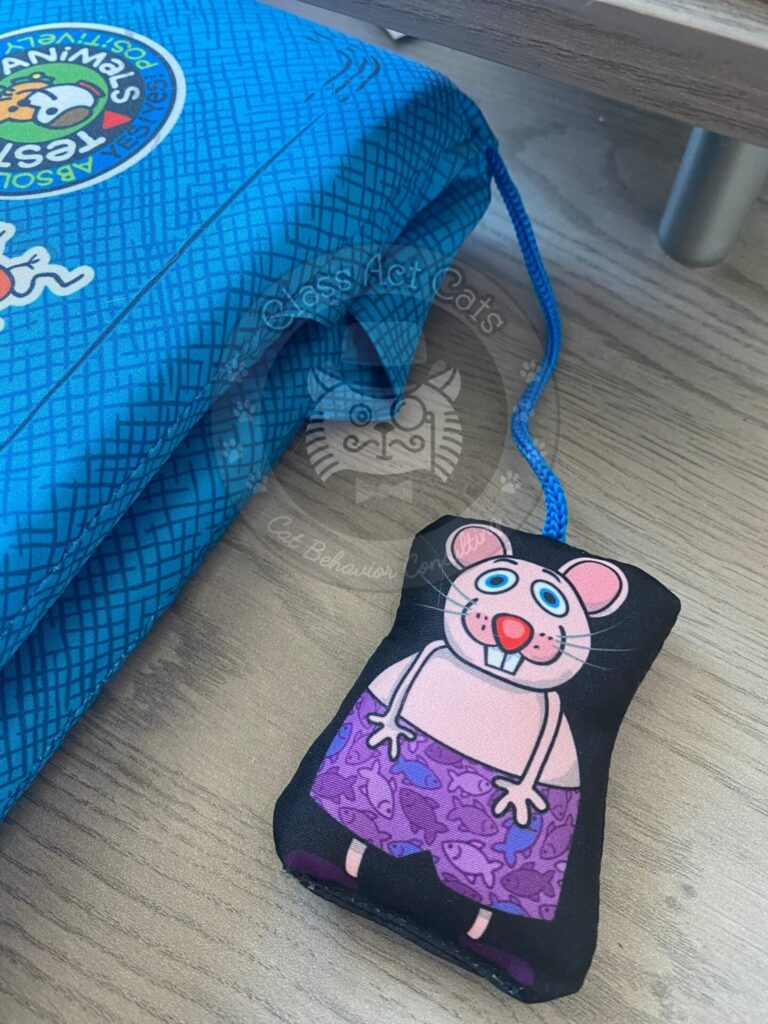 Close-up of the fake mouse attached to the cat laptop, highlighting its realistic design.
Close-up of the fake mouse attached to the cat laptop, highlighting its realistic design.
Fig 2. The hyperrealistic mouse attachment adds to the decoy’s authenticity.
For comparison, we used a standard, functional Macbook Pro laptop as the “real” laptop in our experiment. This allowed us to observe if our feline subject would show a preference between the genuine article and the decoy.
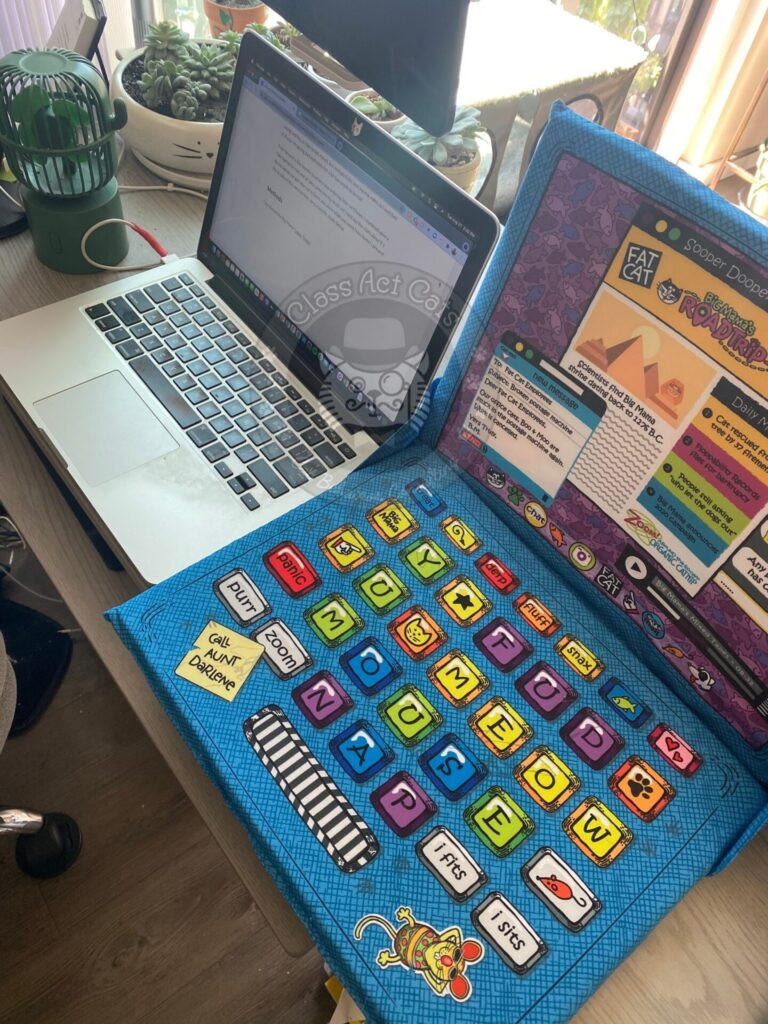 A real Macbook Pro positioned next to the blue fake cat laptop, illustrating the visual comparison.
A real Macbook Pro positioned next to the blue fake cat laptop, illustrating the visual comparison.
Fig 3. Side-by-side comparison: Can you tell which laptop is for work and which is for play?
Our experimental setup was completed with a typical home office environment, including an office chair known for its feline-attracting properties – because, let’s face it, cats have a knack for claiming our favorite spots.
Our Feline Participant: Subject Z and the Cat Laptop Study
For our prestigious scientific endeavor, we recruited one feline participant (n=1). In the spirit of convenience sampling, the researcher’s own cat was chosen. Our subject was an 11-year-old neutered male Siamese mix, known as Z for privacy. Ethical considerations were paramount, of course. Z was compensated handsomely for his participation with chin scratches, his favorite cat treats, and delicious wet food. While formal written consent was impossible due to Z’s species, verbal consent was attempted and his enthusiastic meows were deemed sufficient for our low-stakes study.
Methodology: Testing the Allure of the Cat Laptop
Our experiment took place in a home office setting, complete with a standard level of everyday clutter. We started with a brief preliminary test over two evenings, placing only the decoy laptop on an end table, without the real laptop present as a control. On the first night, Z showed little interest. However, on the second evening, he did spend a short time resting on the fake laptop. This initial positive interaction encouraged us to proceed with a more comprehensive study.
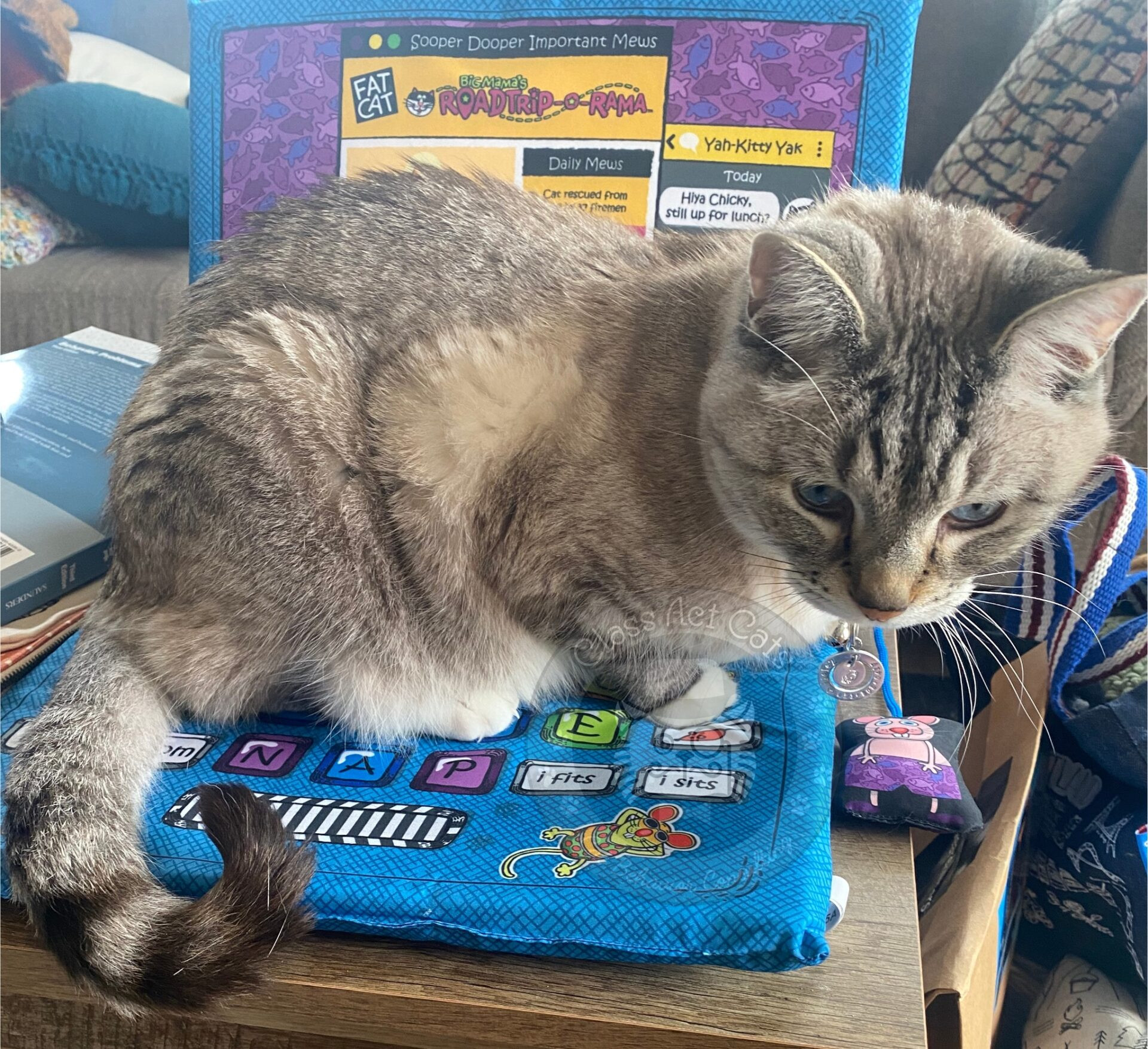 A cat comfortably resting on the blue fake laptop during the preliminary testing phase.
A cat comfortably resting on the blue fake laptop during the preliminary testing phase.
Fig 4. Initial acceptance: Z briefly enjoys the decoy laptop.
For the main experiment, both the real and decoy laptops were set up side-by-side in the open position before the workday commenced. Z had free rein to enter and leave the office space, with continuous access to his litter box, water, and food. Observations were recorded using a standard smartphone camera, starting at approximately 8 am, and repeated over several days to ensure reliable results. By keeping both laptops open, we aimed to eliminate any potential confusion and ensure the decoy laptop was clearly presented as an alternative resting spot.
Results: Did the Cat Laptop Win Over Our Feline Friend?
On the first day of the experiment, and consistently over the following days, Z maintained a similar morning routine: sleep in until about 10:30 am. Upon entering the “laboratory” (aka, the living room), Z made his presence known with loud meows until he received his second breakfast. After breakfast, the experiment truly began. Z approached the researcher, jumped onto his lap, and then, surprisingly, directly onto the decoy laptop.
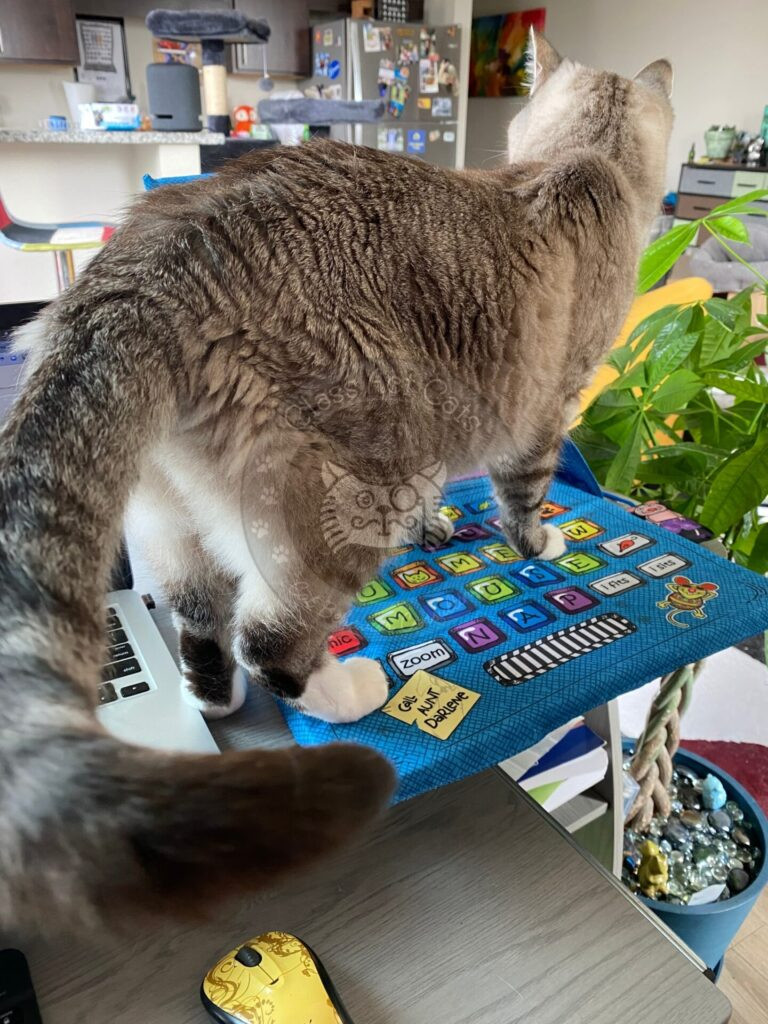 A cat standing inquisitively on the fake laptop, shortly after initial contact, in a home office environment.
A cat standing inquisitively on the fake laptop, shortly after initial contact, in a home office environment.
Fig 5. Initial encounter: Z investigates the decoy laptop.
Following this initial contact, Z quickly transitioned into the “loaf form” – a scientifically recognized feline posture.
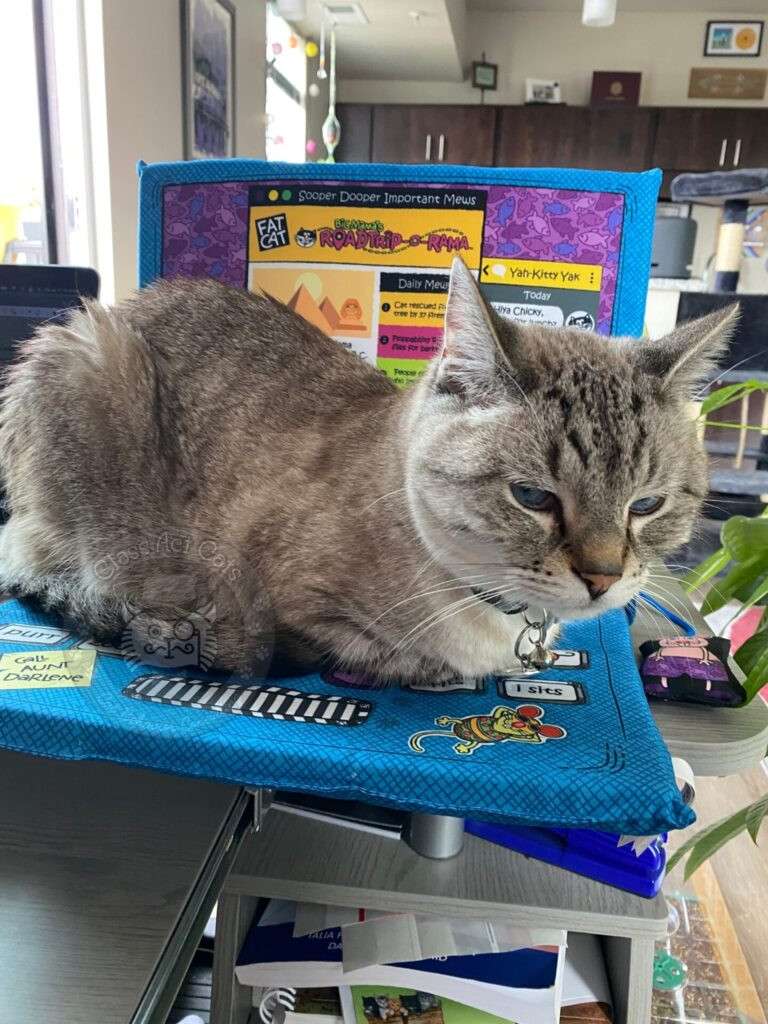 A cat in the loaf position on the fake laptop, casting a sideways glance at the camera.
A cat in the loaf position on the fake laptop, casting a sideways glance at the camera.
Fig. 6. The loaf form: Z settles in, perhaps pondering the purpose of this peculiar object.
As expected for a cat in loaf form, Z soon progressed to “nap form.” Soft snoring sounds emanated from the decoy laptop as Z drifted off to sleep, only briefly disturbed by a bird outside.
 A cat deeply napping on the fake laptop, completely relaxed and at ease.
A cat deeply napping on the fake laptop, completely relaxed and at ease.
Fig. 7. Nap form: Research participant Z fully engaged in data collection (of sleep).
In subsequent days, Z exhibited similar behavior patterns, consistently showing interest in the decoy laptop, though the duration of his naps varied. Intrigued, the researcher modified the experiment by keeping the decoy laptop closed while continuing to work on the real laptop. Interestingly, Z’s level of interest in the decoy laptop remained consistent, regardless of whether it was open or closed.
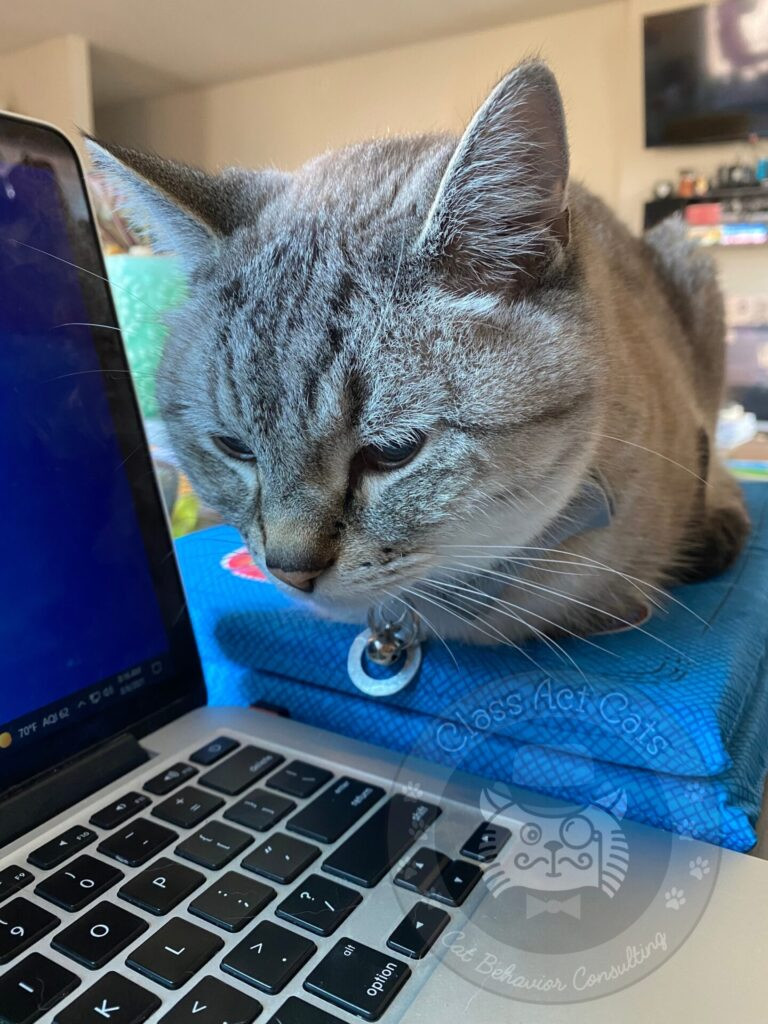 Zoloft the cat resting comfortably in loaf form on the closed fake laptop, positioned near the real laptop.
Zoloft the cat resting comfortably in loaf form on the closed fake laptop, positioned near the real laptop.
Fig. 8. Closed laptop, same result: Z in loaf form, resisting the urge to nap… slightly.
Discussion: The Verdict on Cat Laptops for Feline Distraction
After meticulous data analysis (mostly admiring cute cat photos), we reached a crucial conclusion: Subject Z is undeniably handsome and photogenic in all forms – regular, loaf, and nap. While this wasn’t the primary research objective, it’s a significant finding nonetheless.
More importantly, our study supports the TikTok trend: cats do seem attracted to decoy laptops as an alternative to real ones. This suggests that a cat laptop can be a practical solution for cat owners wanting to work without feline interference. For those concerned about deceiving their beloved pets, alternatives like elevated desk-mounted cat beds can also provide a dedicated space for your cat to be near you while you work.
Our findings also reinforce the principle of redirection in cat behavior modification. Providing an appropriate outlet for a cat’s natural desire to be close to their human and rest in a comfortable spot can effectively redirect them from unwanted behaviors, like keyboard-walking. The positive reinforcement, in the form of attention and comfort, likely further encouraged Z’s affinity for the decoy laptop.
Study Limitations and Future Cat Laptop Research
We must acknowledge the limitations of our study, primarily the small sample size (n=1), which limits the broad generalization of our conclusions. Numerous uncontrolled variables and a distinct lack of rigorous statistical analysis also leave room for further investigation. Future research could explore different decoy materials, such as fake televisions, couches, or even DJ turntables, to further understand feline attraction to human-adjacent objects.
For cat owners seeking personalized behavior advice, Class Act Cats offers consultations to help transform sassy cats into classy companions through science-backed behavior modification techniques. Explore the Class Act Cats blog for more engaging topics, from understanding gay cats to practical guides on introducing cats.
Update 2/20/23: While the exact laptop featured in our experiment may no longer be available, similar cat laptops, some with added scratching surfaces, are still on the market, offering ongoing solutions for laptop-loving cats.
Need Cat Behavior Help?
Set Up a Consultation

